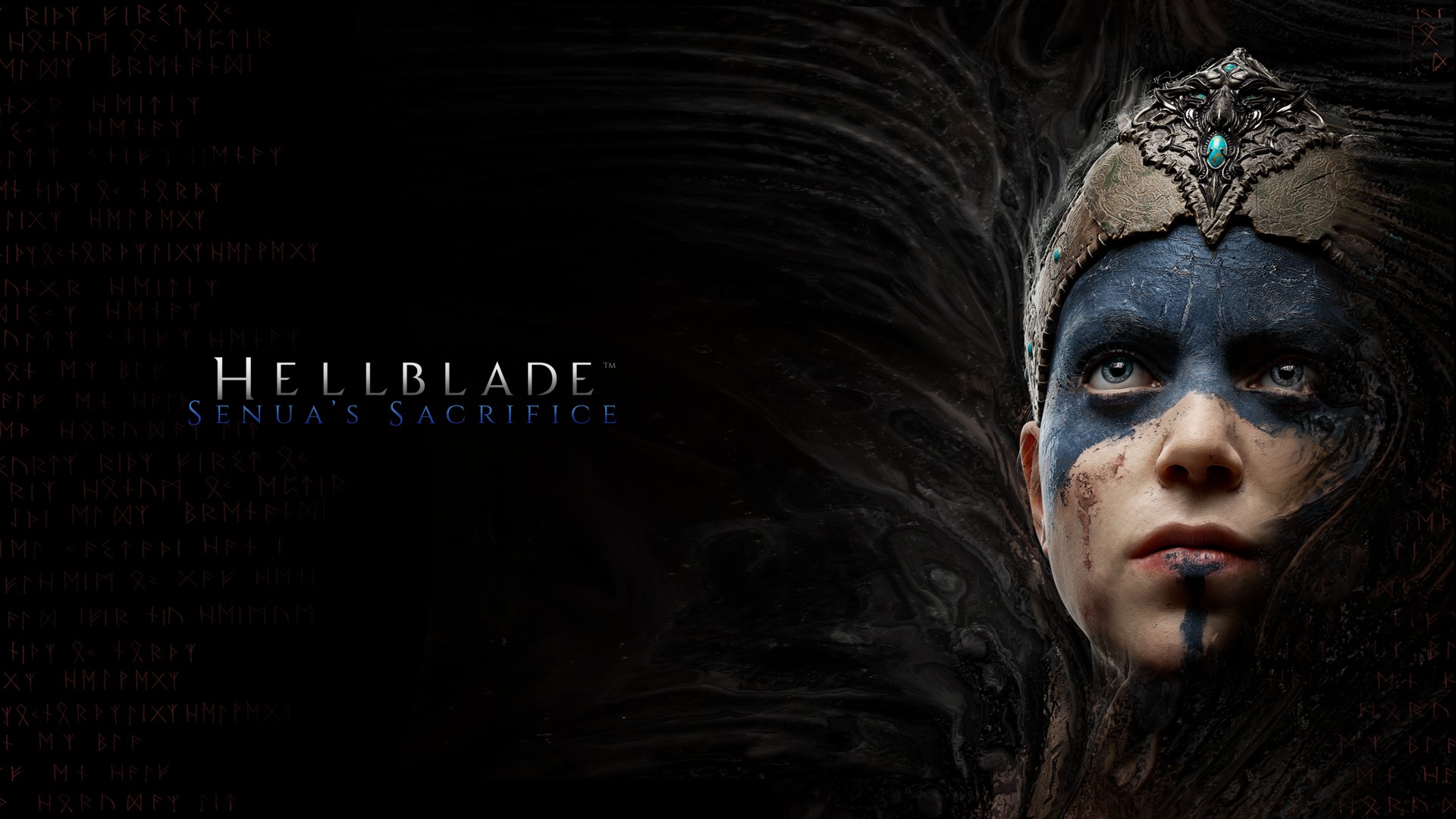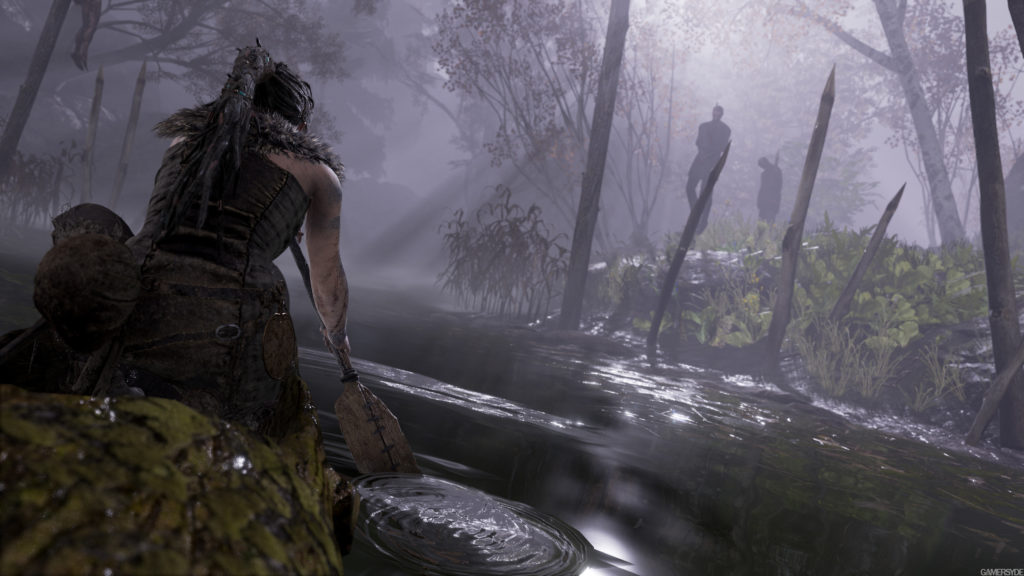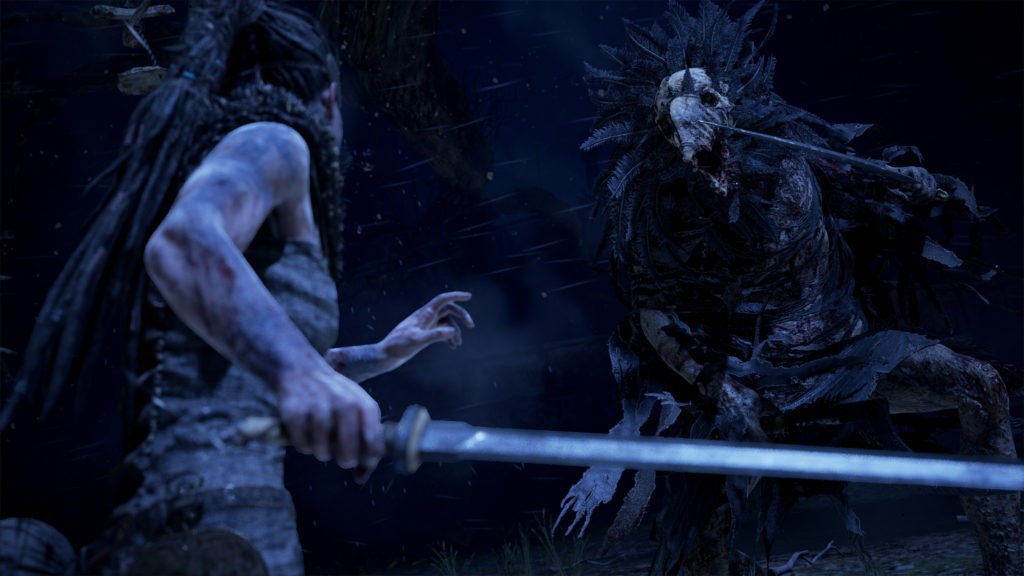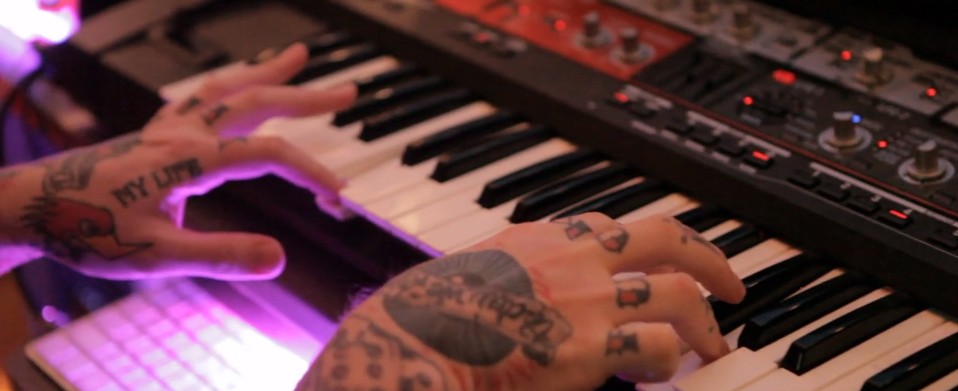
Article by Alyx Jones
Edited by Sam Hughes
Developer: Ninja Theory
Audio Director: David García
Music: David García & Andy LaPlegua
Voices: Chipo Chung, Melina Juergens, Nicholas Boulton, Steven Hartley, Oliver Walker, Ellie Piercey
Reviewed on: PS4
The new game Hellblade: Senua’s Sacrifice, from Ninja Theory (DmC: Devil May Cry) is finally out for us to play, in all it’s unsettling and demonic glory! Puzzle meets hack ‘n’ slash, makes for an interesting combination. While there are some similarities with previous games by Ninja Theory, Hellblade really has its own identity. Ninja Theory refer to themselves as an “Independent AAA“, with a core team of 15 people. They wanted to ride the middle ground between creating/funding new IP for AAA studios, and the “open development”, creative freedom and risk taking afforded to many smaller companies.
Senua finds herself in a world inspired by Norse and Celtic mythology, having to battle demons and Gods in a journey to lift a curse upon her. We start the game being asked to wear headphones for the best experience of “3D Binaural Sound”. In the opening sequence we journey past hanging dead bodies with the voices in Senua’s head telling us to turn back. We are placed in the game world and although we have control of Senua, the main voice in her head (Chipo Chung) invites us to join them, once we get on land, as if we were merely spectating before. It breaks the “fourth wall” for just a moment, and might leave some wondering about their exact place in the game. The voices move around us in 360, sometimes whispering close up in one ear, sometimes further back. It’s certainly disconcerting, to hear the fine details of someone’s voice and mouth, such as lip movements and sibilance, right up close. It feels uncomfortably close, with lots of voices whispering at once or making other vocalisations, such as moans, groans and gasps in reaction to the environment as we progress. There is always at least one encouraging us, and one putting us down. The voices talk about Senua from what feels like “inside our head”, and it feels like we are placed as one of the voices in her head.

The team behind Hellblade were careful and sensitive to properly research patients experience of psychosis, and consulted with professionals and patients to create an appropriate representation of what it’s like to have psychosis. Some patients described the voices they hear as coming from specific places around them, so the team applied this technique to their binaural recordings, with actors moving around in 3D space. One limitation of these kind recordings, made with a “Dummy Head”, is that the position is fixed, so cannot be panned or moved from within the game engine. Tameem Antoniades (Creative Director) almost discounted binaural recordings, but came to think of the player as an observer, an active participant, and concluded that:
“If the voices are relevant to us, it doesn’t matter if we move the camera, it still makes sense”.
When we can see representations of characters, such as our mentor, on the screen, their voice is mixed in relation to us (the player), rather than how Senua would be hearing them e.g. A character is speaking to Senua’s left, but is on our right looking at the screen, so is mixed to the right. This emphasises our position as an observer/third party effectively.
As the game progresses Senua (Melina Juergens) becomes more vocal, especially as we get flashbacks and start to discover what has happened to her. Her performance captures the delicate emotionality, yet violently tortured soul behind Senua. The bravery and realistic execution of what it’s like to fight demons three or four times the size, with an unfair advantage, makes for compelling combat, compared to many games where the protagonist can take lots of damage, we feel every hit Senua takes, and share in her suffering.
Thunder rolling overhead, and ripping across the sky, becomes a familiar sound for us, regardless of blue skies or sunsets being visible. I had to take my headphones off at first to check if there was a storm outside! This contrapuntal use, pitting audio against visuals is effective in creating the sense of an alternate reality within our head. There is a perceptual phenomenon called the “McGurk Effect” where the pairing of different visuals to the same auditory component can result in the subject perceiving a a new “third sound”. They wanted to take this concept and the merging of sounds such as thunder, into fire to add to the notion that how we experience the world is further down to our brains interpretation of how audio and visuals can influence our perception of what is taking place.
David García has really done an incredible job as Audio Lead, it’s ridiculous how much has been achieved with what is essentially a one man audio team. Even simple sounds, like footsteps, feel well mixed and non-repetitive. Creaks of leather clothes and clinks of chains/metallic beads just adds to the detail and realism. He’s done some incredible work on the breathing cycle, that settles when we settle, and if we’re walking more, the breathing is more intense. It’s also linked to the level of tension/fear that Senua is feeling. Internal shaky breathing and light whimpers, don’t actually come from Senua, but from close by, in “our head”. The Breathing System is also linked to the environmental sound, so out breaths can relate to the wind or swells in nearby fire, allowing embers and particle systems to breath with Senua.

Hellblade was developed using the Unreal Engine, so the audio system Garcia created is mostly done in Unreal‘s blueprinting system. This allows for dynamic mixing, but he also worked hard to allow for audio to act as a guide for the player. The team wanted to get away from using a HUD (Head-Up Display), and didn’t want quest markers/visual guides, but instead opted to use audio to push the players attention in the right direction. Audio as a locater works really well for Hellblade, especially when we have to track Valravn, through his illusions. All we can hear is the low guttural chanting from Andy LaPlegua, as the song of Valravn, that we must follow to find him. Very occasionally it can lead us off course a little if we have too many corners to turn, but this can be a problem with compasses on a HUD too.
“I’ve always been advised that you can’t rely on sound as a primary feedback mechanism in games…but after the work we’ve done on Hellblade, and hearing the results, I don’t think I could ever follow that path again. I think sound really is so important, it has to be part of the experience.” – Tameem Antoniades
There is one place where the music cuts out a bit too suddenly, if we die and respawn, the battle theme may still be playing (even though we’re not in combat) and if we walk further away from the intended area, the music just cuts out, rather than a fade. The switch between audio environments is a bit too sudden, although it does clearly indicate we are going the wrong way. When we finally do get to battle Valravn (or a different boss if you chose the fire path), the combat is very satisfying sonically. Impacts always feel blunt, punchy and never too slicey. When we enter our focus ability (with the mirror), impacts feel heavier, while time progresses slower.
Andy LePlegua (Combichrist, Icon of Coil) was brought in to work on the music for Hellblade. Ninja Theory didn’t want to go down the cliche route of a big orchestra, and felt it would be wrong for the game and its aesthetic. LePlegua usually writes in the aggrotech and electro-industrial genres, and was originally chosen only to buy viagra online in us work on the Viking side of the music, but after further conversations was allowed to experiment with Senua’s side of the soundtrack too. This was much more folk inspired and familiar. LePlegua is from Norway, one of the main locations Vikings are known for, and used Norweigan lyrics in many of his compositions to tie into the game world. He recorded lots of organic materials such as metals, but also used a tabletop guitar (popularised by Keith Rowe), to record the sounds of strings being stretched and bent, as well as drilling against the strings, that were recorded through the guitars pickups.

My main criticism of the music is that it didn’t feature female vocals much, when the main protagonist is a female, and she has all these voices present, who are mostly female. Just Like Sleep by Passarella Death Squad is used really effectively in the finale, and the impact of the female voice is haunting, beautiful and fitting. However, I do appreciate the increasing use of vocals in video games, and the willingness to experiment with genres outside of the obvious choice of big orchestral scores.
Overall, the audio for this game is insanely good, I haven’t been this excited for such a good sounding game for a while. It’s only a matter of time for the audio/sound awards to start rolling in for this title. David García deserves high praise for his work creating the horrifying, immersive sound world for Hellblade, and I highly recommend checking out Ninja Theory’s development diaries for deeper insight into their creative process, with the sound design, music, implementation and voice actors!
LINKS
Official
We hope you enjoyed Alyx’s review, check out others in our Reviews section. Don’t forget to sign up to our Monthly Newsletter to make sure you don’t miss out on our reviews and interviews.
We’re also running a Patreon campaign to make sure we can keep bringing you regular, high quality content if you’re feeling generous! Thanks for even sharing!
The Sound Architect




